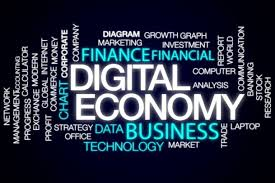11 Tips to Align Website Projects With Sustainability Goals

The Gist
- Climate urgency. Businesses must address the sustainability and carbon footprint of their digital projects to meet ethical, customer and regulatory demands.
- Sustainable strategy. Aligning website projects with company sustainability goals enhances credibility and customer engagement, avoiding “greenwashing.”
- Digital green steps. Implementing measures such as sustainable hosting and emission offsetting can significantly reduce the environmental impact of websites.
The climate crisis isn’t going away, and things are only just going to get worse. It is inevitable that increasingly businesses will need to consider the sustainability and carbon footprint of everything they do, not only to meet ethical concerns and customer expectations, but also to meet regulatory and reporting requirements.
While that latter scenario may feel like it is potentially way off, there are things you can do now to reduce the digital carbon footprint of projects such as websites and apps. Let’s take a look at developing sustainable website design and other practices.
The practices around making digital projects more sustainable is still nascent. One of the main issues is that it is difficult to accurately measure the digital carbon footprint of, say, a corporate website. While this is likely to get easier as the business demand for better reporting increases, you can still make a lot of progress today.
Reducing or minimizing the carbon footprint of a digital project is best done in the planning stages when you’re actually mapping out the requirements and the roadmap. But there are also tactics you can apply to an existing website.
In this article, we’re going to discuss some of the ways you can make a difference. Although we are focusing on websites, many of the points are also relevant to other digital projects, such as an app, an intranet or other related channels.
Sustainable Website Design for Businesses
1. Align Your Project With Your Company’s Sustainability Goals
Most organizations have some sort of commitment to being more sustainable. Some may have detailed policies in place or specific targets they want to reach, such as reaching net zero by a particular date.
It’s important to align your website project with your company’s wider sustainability goals. This will give it more credibility with both customers and internal stakeholders and enable you to leverage approaches already in place, such as offsetting your carbon footprint with activities such as tree planting. With this in mind, it is also important to make sure your project is genuinely sustainable and not regarded as a “greenwashing” exercise.
Related Article: Sustainable Website Design for a Better Environment
2. Measure Your Digital Carbon Footprint
Clearly a major element of being sustainable will involve measuring your carbon footprint on an ongoing basis. You can then assess the progress you are making, particularly if you measured the impact of your old site.
However, as already observed, tools that measure your carbon footprint are not necessarily mature, and there can be questions about their accuracy. However, there are lots of free tools out there, (all easily Googled) which can be easily used. Even if the process around measuring is largely manual and done only on a quarterly basis, anything that shows progression and intent around sustainability is a plus.
Related Article: Sustainable Website Design: Is Your Website Hurting the Planet?
3. Carry out a Sustainability Audit
If you are making improvements to an existing site or want to show the difference between your old legacy site and your new project, you should carry out a site sustainability audit. This will identify areas where you can make improvements and also give you a good story to relay to customers, internal stakeholders and partners. Measuring the “before” to compare the “after” will also help you to tell your sustainability story.
Related Article: Balancing Speed and Sustainability in Website Design
4. Use More Sustainable Hosting
One of the most tangible ways you can reduce the digital carbon footprint of your website is to use a host who is fully committed to sustainability. The good news here is that both Amazon Web Services and Microsoft are making positive steps in this area by committing to making their data centers powered by renewable energy by 2025. Ensuring your hosting is as green as possible also helps give credibility to your sustainability efforts.
5. Consider Offsetting Emissions
Options exist to offset emissions and help you be net zero; for example: tree planting. However, it is critical to ensure you still reduce emissions through other means. Planting trees isn’t the only answer.
6. Reduce Time on Page
The collective footprint of your site will be determined by the number of visitors you receive and how long they collectively stay on your site. There is clearly a bit of a conflict here because you’re likely aiming to attract more visitors, which ultimately increases the footprint.
However, you can design your website so it is highly usable and reduces the time a person spends on a page. Shorter, more focused content with clear calls to action and strong usability and accessibility designed to support user journeys are, of course, good ideas anyway. These design principles can also contribute to a greener site.
7. Use Caching and Content Delivery Networks (CDNs)
You can also reduce your site’s potential carbon emissions by using caching and Content Delivery Networks (CDNs) to move the transfer of data closer to the user, rather than all the way from the Data Center. Collectively over a year this could make a significant difference in reducing the data processing required. Of course, this also increases page load speeds and performance, so it’s good news all round.
8. Reduce the Size of Images and Other Assets
You can also reduce the size of your images and other related assets, including files, in order to reduce your footprint. Having to download an unnecessarily large image, video or PDF report can also result in slow page load times, particularly in areas of low connectivity or on mobile devices. With the latter, the use of some images might not even be necessary.
9. Reduce Bot Traffic
There are multiple bots that crawl the web, some of which are unnecessary and even malicious. Collectively, the environmental impact of bot traffic is potentially enormous. There are ways to reduce the bot traffic, including blocking access to specific bots or using a bot management solution.
10. Consider the Positive Impact Beyond the Website
There are still many real-world processes and practices where going digital can have the potential to reduce your digital carbon footprint. That’s not always straightforward to measure, but it’s possible your website or digital project can make a tangible difference. For example, supporting a digital transaction may reduce the need to travel; or allowing access to PDF files might eliminate using paper. If you can, ensure you wrap the wider impact of your site in supporting sustainability into your reporting.
11. Make Incremental Improvements
Measuring the carbon footprint of digital projects is still in early maturity. There will likely be improvements in tools and approaches; for example, with more built-in features in CMS and DXP platforms. Umbraco, for example, is releasing a sustainability dashboard. There will also be new challenges such as the potential high carbon footprint of generative AI. Expect a journey where incremental improvements will be both desirable and necessary.
Act Now to Reduce Carbon Emissions
We’re in a race against time when it comes to the climate. Every little action can make a difference, and that can start with your sustainable website design and other practices. Here’s the thing though — virtually every tactic you apply to reduce your digital carbon footprint also improves the user experience, so it all becomes a bit of a no-brainer.
Act now – it’s inevitably going to become normal practice in the coming years in how we execute and manage digital channels and projects.



